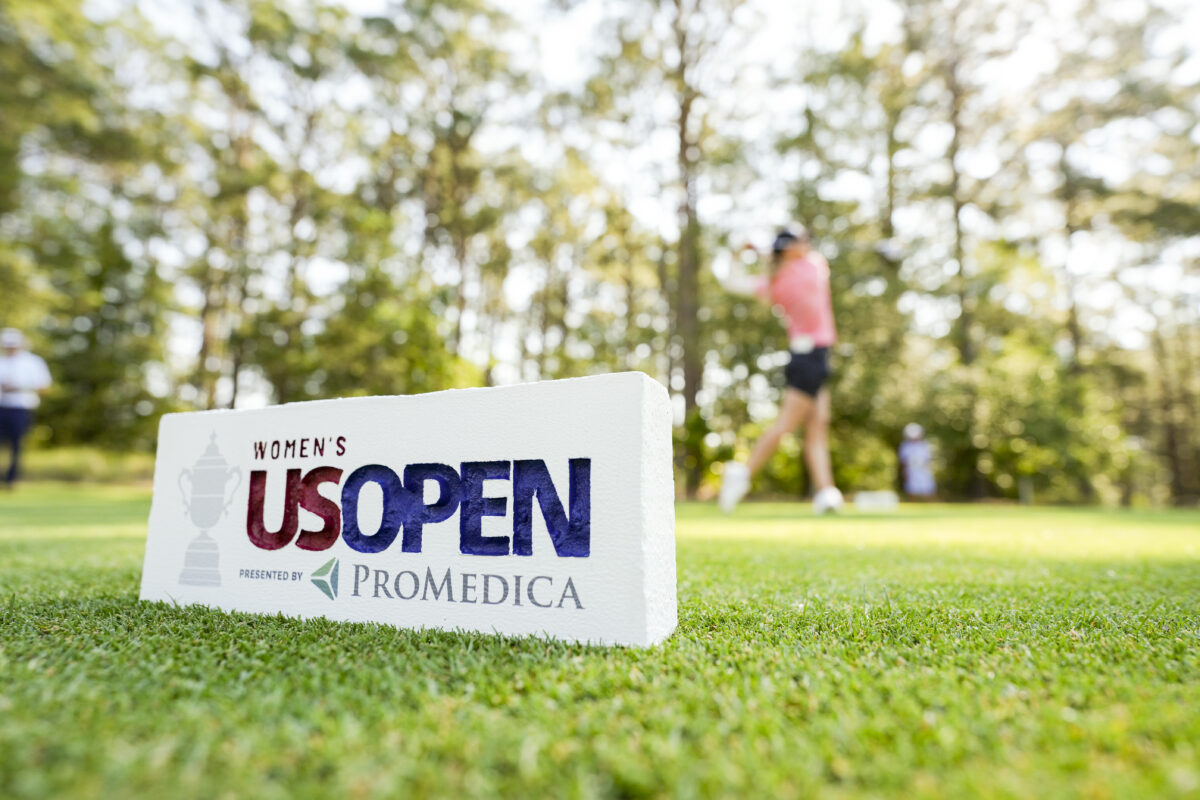SOUTHERN PINES, N.C. – Stephanie Meadow finished third in her professional debut at the 2014 U.S. Women’s Open on Pinehurst No. 2. She earned $285,102 for her efforts, a massive sum for a recent college graduate.
“I had a rough time in ’16 and ’17,” said Meadow of the years immediately following her father Robert’s death. “That money carried me through that.”
The U.S. Women’s Open purse has long had a life-changing impact, not just for winners, but for many like Meadow, who cash the biggest checks of their careers. Some, like her, won’t yet be tour members.
This week, that will likely happen more than ever with an historic $10 million purse on the table thanks in large part to the addition of ProMedica, the championship’s first presenting sponsor.
Brittany Lang echoes the thoughts of many of her peers when she says playing on the LPGA was never about the money. When she won this championship in 2016, she remembers walking in the parking lot with her mom and brother and asking, “What do you win for this? I don’t even know.”
It was always about the dream.
“Now that I’m close to hanging it up,” said Lang, “and I have a daughter, and you start thinking about money and you play worse.”
Lang made $810,000 when she won the Open at CordeValle.
The winner of this week’s championship will earn $1.8 million. The player who finishes runner-up will earn $1,080,000. That’s more than last year’s winner, Yuka Saso, who earned $1 million.
“Honestly, the thought of a $10 million purse just absolutely blows my mind to be perfectly honest,” said former major champ Karen Stupples. “I don’t even know how to think about money in those terms and how – what it means going into your bank account, what the potential is there in one big chunk, even for like a 30th place or a 40th place.”
Even those who miss the cut this week will receive $8,000, double last year.

Early on in her career, Matilda Castren had three seasons in which she lost money. She gave herself a five-year span to earn her LPGA card and make it.
“I remember looking at my bank account and there was $10 left,” said Castren. “OK, I just have to survive until next month, and then I know I’m getting a check. That’s a really common thing. I think a lot of people don’t realize it. People just think you’re living your dream playing golf every week. It’s really not as simple as that.”
Castren, 27, won seven times in college at Florida State and competed on the Epson Tour until earning her LPGA card for the 2020 season through Q-School. In 2021, she won LPGA Mediheal Championship to become the first player from Finland to win on tour. She earned $225,000 for her victory.
“It just felt so surreal,” she said, “just logging into my mobile app and seeing all the zeroes.”
A now-engaged Meadow would like to buy a house in the near future, but must weigh the risk of parting with a large chunk of money against the possibility that she might get injured or go through another rough patch where little money is coming in.
“I think the older you get,” she said, “the more you realize how lucky the (PGA Tour) guys are.”
How big is $10 million? Consider that next week’s purse at the ShopRite LPGA Classic is $1,750,000. There are 15 events on the LPGA schedule with purses that are less than $2 million.
“We don’t start playing golf for money,” said veteran Carolina Masson. “That’s not the incentive, that’s not the reason. But when you come out here, especially as a young player, money is an issue because you need a lot of money to do what you do for a full season.
“Playing for this kind of money is huge; it gives so much opportunity.”
[listicle id=778272586]




